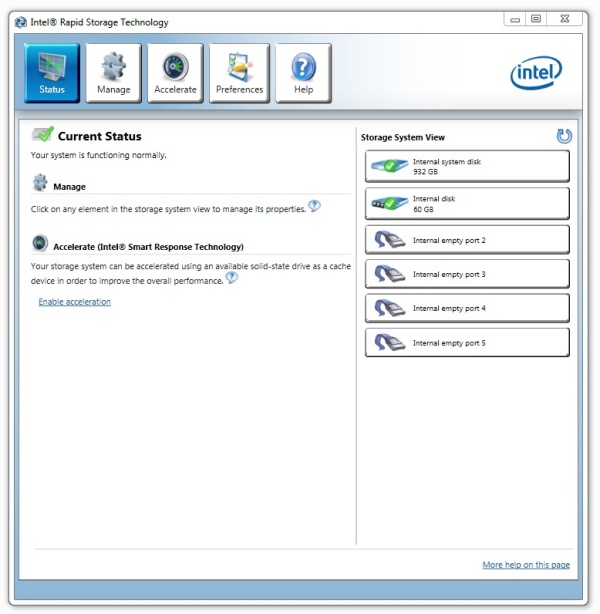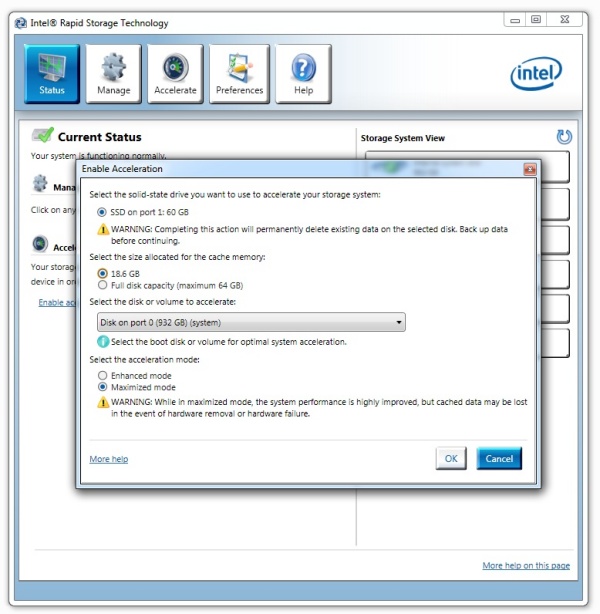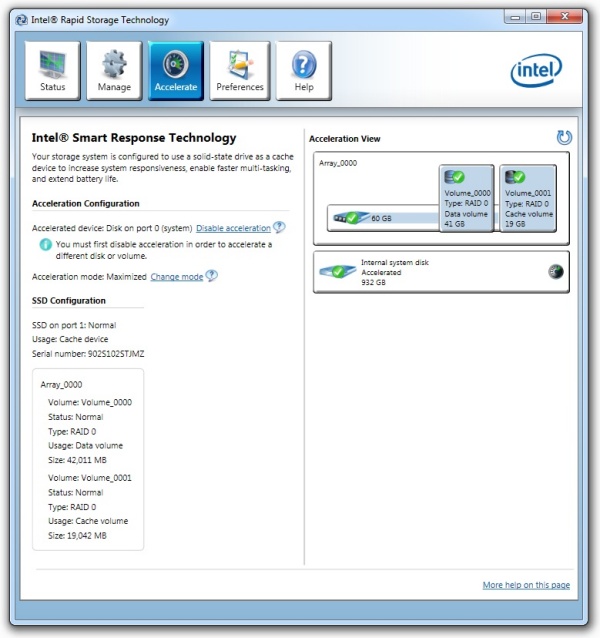Intel Smart Response Technology
Flash-based storage represents a massive leap forward in performance when compared to traditional hard drives, largely due to its zero millisecond access time. Unfortunately, that speed still comes at an with exorbitant premium, with most mainstream SSDs costing around $2.00 per gigabyte while conventional HDD technology costs roughly five cents per gigabyte.
While most of us can't afford to transition entirely to flash storage, it's increasingly common for enthusiasts to house their operating system and certain programs on a relatively inexpensive low-capacity SSD. The obvious drawback is that you're still forced to rely on an HDD for large applications and media, which won't enjoy the same performance benefits.
Seagate first demonstrated SSD caching technology with their Seagate Momentus XT series. The hybrid drives utilize "Adaptive Memory" to automatically move frequently accessed data to a 4GB NAND flash module. The performance and price of these drives make them a reasonable compromise for pricey full-sized SSDs, but they do leave quite a bit to be desired.
Intel has developed its own solution called "Smart Response Technology," which takes a slightly different approach. Instead of having a small NAND flash buffer on your hard drive, SRT lets you separate both storage mediums, creating a more flexible solution – and a potentially faster one at that.

You can select any SSD as long as it is at least 20GB in capacity and pair it with any HDD. The SSD is used as a cache for commonly used data blocks while the Z68 chipset monitors the HDDs usage patterns and transfers the most frequently accessed bits of data from the HDD to the SSD.

Data stored on the HDD must be accessed multiple times before it's transferred to the SSD, so data that is infrequently accessed or new will not take advantage of the speed bump provided by the SSD. In other words, you are unlikely to witness an immediate performance boost in freshly installed programs or while transferring large files.
Where SRT really surpasses the Seagate Momentus XT is in its ability to utilize much larger SSDs. You can dedicate just 18.4GB of an SSD for caching purposes or you can use the entire drive – though limiting the use to just 20GB makes more sense as larger 64GB+ drives would probably work better if they were used solely as the boot drive.

Intel plans to launch a drive specifically for use with SRT. We expect the upcoming 20GB Larsen Creek SSD to cost around $50 and it should present a fantastic value when paired with a 2TB HDD. Although we don't have a 20GB Larsen Creek SSD yet, we used the Kingston SSDNow V+ 180 64GB for testing purposes which should provide similar performance.